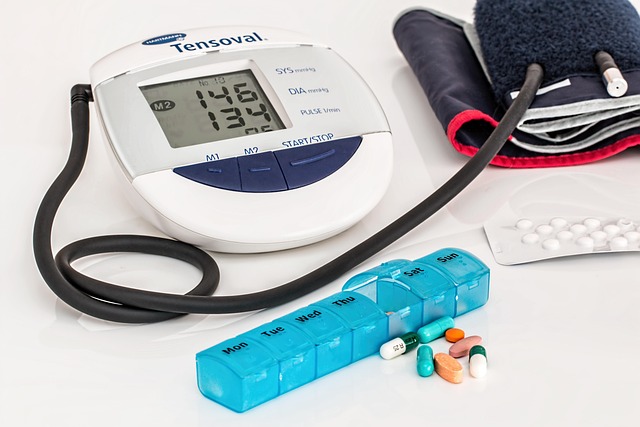Post-traumatic stress disorder (PTSD) is a complex mental health condition with symptoms like re-experiencing trauma, avoidance behaviors, mood changes, and heightened arousal. Key factors include direct exposure to trauma, genetics, and environment. Effective PTSD treatment combines psychotherapy (CPT, EMDR), medication, CBT, trauma-informed care, mindfulness, support groups, art/music therapy, and stress management techniques, addressing symptoms and causes for holistic recovery.
Trauma and post-traumatic stress disorder (PTSD) can profoundly impact an individual’s life, affecting their mental health and daily functioning. This article explores comprehensive approaches to PTSD treatment, focusing on various psychotherapy techniques proven effective in managing symptoms. From understanding the intricacies of PTSD, traditional therapy methods, and innovative techniques like Eye Movement Desensitization and Reprocessing (EMDR), to community-based support and creative therapies, discover a holistic journey towards healing.
Understanding PTSD: Symptoms and Causes

Post-traumatic stress disorder (PTSD) is a complex mental health condition that can develop after exposure to distressing or traumatic events. It’s more than just feeling scared or overwhelmed; PTSD involves a range of symptoms that can significantly impact daily life and functioning. The American Psychiatric Association recognizes various symptoms, which typically fall into four categories: re-experiencing, avoidance, negative changes in thoughts and mood, and heightened arousal. Individuals with PTSD may relive the trauma through intrusive memories, nightmares, or flashbacks, often triggered by external cues similar to the original event.
Several factors contribute to the development of PTSD. Direct exposure to a traumatic event, such as war, natural disasters, accidents, or violence, is a primary cause. Additionally, genetic predisposition and environmental factors play a role. Some individuals may be more susceptible to developing PTSD due to their genetics or personal history. Understanding these symptoms and causes is crucial for seeking effective PTSD treatment, which often involves psychotherapy, medication, or a combination of both.
Traditional Psychotherapy Approaches for PTSD

Traditional psychotherapy plays a pivotal role in the journey towards healing from trauma and Post-Traumatic Stress Disorder (PTSD). One of the most well-researched approaches is Cognitive Processing Therapy (CPT), which helps individuals identify and challenge unhelpful thought patterns related to their traumatic experiences. By modifying these cognitive distortions, CPT facilitates a reduction in symptoms associated with PTSD.
Another effective method is Eye Movement Desensitization and Reprocessing (EMDR). This innovative therapy involves guiding the patient through guided eye movements while recalling the traumatic event, helping them process and reprocess these memories. EMDR has shown remarkable success rates in reducing the intensity of traumatic memories and associated distress, offering a promising avenue for PTSD treatment.
Cognitive Behavioral Therapy (CBT) Techniques

Cognitive Behavioral Therapy (CBT) is a widely recognized and effective approach within the realm of PTSD treatment. This therapy focuses on identifying and modifying negative thought patterns and behaviors that contribute to trauma-related symptoms. By challenging distorted cognitions, CBT helps individuals develop healthier coping mechanisms and reduce the intensity of distressing memories or flashbacks.
In CBT for PTSD, therapists guide patients through various techniques such as cognitive restructuring, exposure therapy, and eye movement desensitization and reprocessing (EMDR). Cognitive restructuring aids in replacing maladaptive thoughts with more realistic and positive ones, thereby reducing anxiety and depression. Exposure therapy gradually exposes individuals to trauma-related triggers in a safe environment, helping them manage their responses over time. EMDR facilitates the processing of traumatic memories, allowing patients to heal from deep-seated emotional wounds associated with their PTSD.
Eye Movement Desensitization and Reprocessing (EMDR)

Eye Movement Desensitization and Reprocessing (EMDR) is a unique and effective form of psychotherapy specifically designed to help individuals process traumatic memories and reduce symptoms associated with Post-Traumatic Stress Disorder (PTSD). This innovative approach combines guided eye movements, or other bilateral stimulation techniques, with the individual’s recall of traumatic events. During EMDR therapy, patients focus on distressing memories while simultaneously engaging in bilateral stimulation, typically through side-to-side eye movements, tapping, or auditory tones. This process allows the brain to process and recontextualize these traumatic memories, reducing their emotional intensity over time.
EMDR has gained significant recognition as a leading evidence-based treatment for PTSD, with numerous studies demonstrating its efficacy. By helping individuals desensitize to traumatic memories and reduce associated beliefs and emotions, EMDR facilitates a profound sense of healing and empowerment. This therapy offers a promising pathway towards recovery for those struggling with the pervasive impacts of trauma, providing them with tools to integrate their experiences in healthier and more adaptive ways.
Trauma-Informed Care and Safe Spaces

Trauma-informed care is a critical approach in the field of mental health, specifically tailored for individuals who have experienced traumatic events. This method recognizes that trauma can have profound and lasting effects on a person’s psychological well-being, often leading to conditions like post-traumatic stress disorder (PTSD). By adopting trauma-informed practices, therapists create a safe and supportive environment, which is essential for effective PTSD treatment.
Safe spaces are meticulously designed to foster healing and resilience. These environments prioritize the individual’s comfort and security, ensuring they feel heard, understood, and respected. In a trauma-informed setting, therapists utilize techniques such as active listening, non-judgmental attitudes, and empathy to establish trust. This foundation is vital for encouraging individuals to process and confront their traumatic memories, ultimately aiding in their recovery journey.
Mindfulness and Meditation in Healing Processes

Mindfulness and meditation have emerged as powerful tools within the realm of psychotherapy for trauma and PTSD treatment. These practices encourage individuals to focus on the present moment, non-judgmentally, fostering a sense of calm and self-awareness. By cultivating mindfulness, patients can learn to recognize and manage their triggers, emotions, and physical responses, all of which are essential components in the healing process.
Meditation techniques, such as guided imagery or body scan exercises, help individuals process and release traumatic memories and associated distress. Regular meditation practice enables a deeper connection with one’s thoughts and feelings, promoting emotional regulation and resilience. This, in turn, can significantly reduce symptoms of PTSD and enhance overall well-being, making it an integral part of effective PTSD treatment.
Support Groups and Community Engagement

Support groups play a pivotal role in the holistic approach to PTSD treatment. Sharing experiences and stories within a safe, peer-led environment can foster a profound sense of belonging and reduce feelings of isolation. These groups offer a unique space where individuals can openly discuss their struggles, gain valuable insights from others’ journeys, and develop coping strategies together. Engaging with like-minded people who understand the complexities of trauma can be immensely empowering, promoting healing and resilience.
Community engagement expands upon this support by integrating individuals into social networks that promote well-being. Participating in community events, joining local organizations, or volunteering allows individuals with PTSD to rebuild connections and rebuild a sense of purpose. These interactions provide opportunities for social interaction, reducing the impact of loneliness and enhancing overall mental health. By actively participating in their communities, individuals can regain a sense of control and contribute positively to society, which is an essential aspect of healing from trauma-related disorders.
Integrating Art and Music Therapy for Expression

Art and music therapy offer unique and powerful tools for individuals navigating trauma and PTSD. These expressive forms can help clients explore and process their emotions in a safe, creative space. Through painting, drawing, or sculpting, individuals can externalize their internal experiences, making them more tangible and easier to understand. Similarly, music therapy allows people to convey their feelings through rhythm, melody, and sound, providing an alternative means of communication when words might feel insufficient.
Integrating these therapies into PTSD treatment plans can enhance traditional talk therapy. The non-verbal nature of art and music can be particularly beneficial for those who find it challenging to articulate their experiences verbally. This approach encourages clients to engage with their emotions on a deeper level, fostering self-awareness and promoting healing from trauma. By combining these therapeutic modalities, mental health professionals can create a comprehensive and personalized treatment experience tailored to each individual’s unique needs.
Long-Term Management and Preventing Relapse

Trauma and PTSD are complex conditions that require a multifaceted approach for effective long-term management. While initial psychotherapy sessions focus on addressing the root causes and symptoms, ongoing support is crucial to prevent relapse. This involves integrating coping strategies into daily life, fostering resilience, and providing a safe space to process traumatic memories. Therapists often recommend regular check-ins and continued therapy sessions to help individuals maintain progress and navigate potential triggers.
Additionally, building a strong support network is vital for managing PTSD in the long run. This includes engaging with supportive communities, family, and friends who can offer encouragement and understanding. Incorporating stress management techniques like mindfulness, exercise, and relaxation practices can also aid in symptom reduction and promote overall well-being, making it easier to maintain stability and avoid relapse in PTSD treatment.
